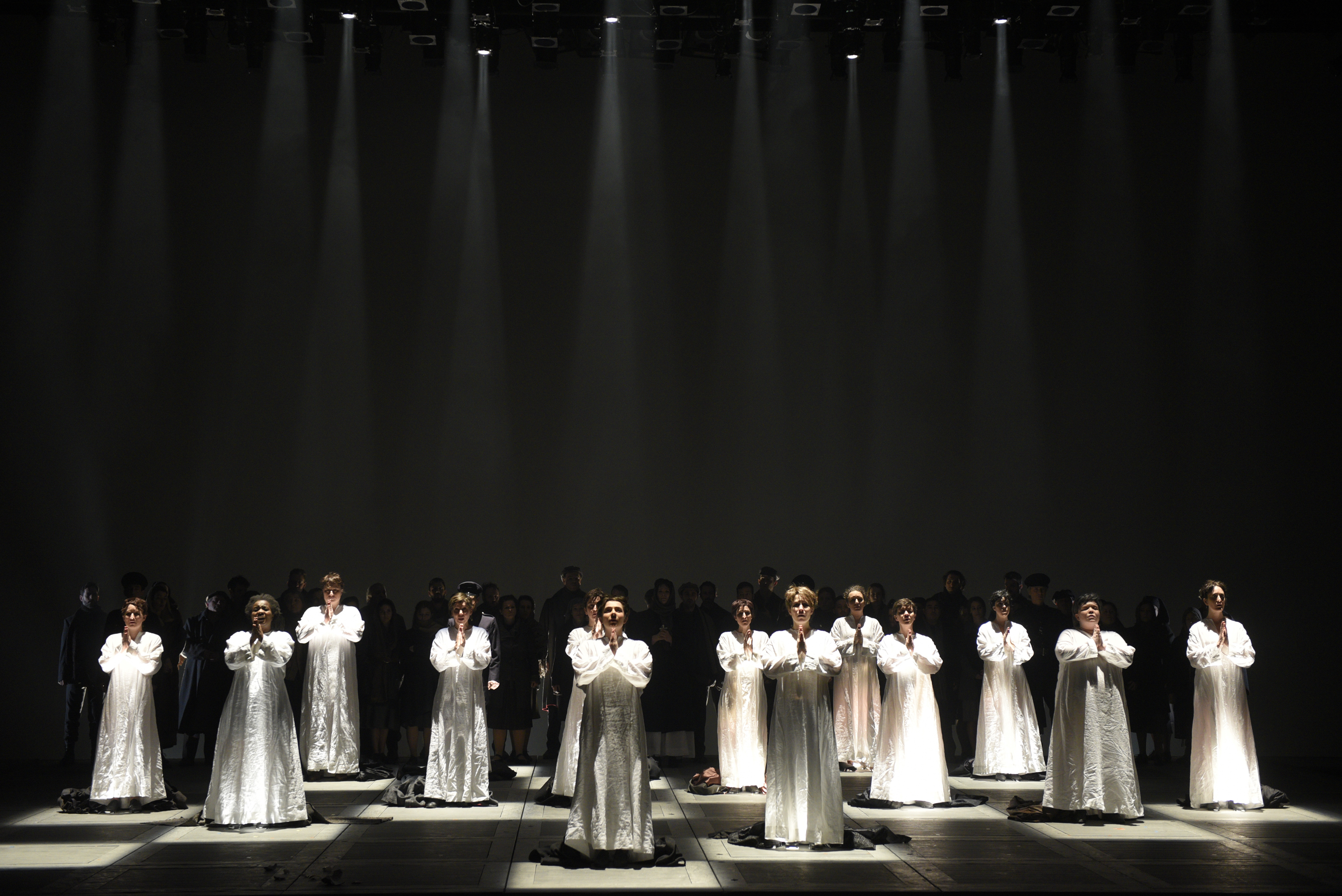Francis Poulenc’s opera tells a tragic story of finding your vocation
When it comes down to it, Dialogues des Carmélites is a story of fear. Fear of living, fear of death, fear of fear.
Written by Francis Poulenc in 1956, Dialogues des Carmélites is set in France in 1789 and is a fictionalised tale of the Carmélite nuns, who were guillotined in 1794 in the final days of the French Revolution for refusing to renounce their vocation.
This first opera of the new year stars an all-Canadian cast, and tells the story of Blanche (Marianne Fiset), a young, skittish woman afraid of everything. Her fear is so great that she decides to become a nun, in order to find some peace and a place where she can feel safe from her irrational fear of the world. There, she meets the ailing Madame de Croissy (Mia Lennox), the prioress, who accepts her into the Carmelite convent in Compiègne.
Blanche soon realizes that even the convent cannot totally be an escape for her fears. The political turmoil in France soon spills over into her safe, secluded refuge, which is threatened by revolutionaries who wish to dispose of the Church in order to found a new France. Blanche and her fellow nuns are labeled anti-revolutionists and are sentenced to death.
One of the striking aspects of the opera is the almost complete lack of props or decor. The stage was largely barren, with only a handful of chairs to break up the empty space as the actors walked around. Long, white curtains acted as dividers and makeshift walls. This simplistic decor accomplished two things. It contrasted with Blanche’s fear of the world, a fear of fear rather than a concrete fear of a thing. The empty space emphasized that these fears were from Blanche, and not from any outside agents. Secondly, this minimalistic decor heightened the drama, as the stage was stripped clean of any distractions. With several intense, emotional scenes, the lack of decor and props ensured that the audience’s full attention remained on the characters. As this was a largely dialogue-driven story, the limited decor heightened the dramatic elements, such as Madame de Croissy’s fear of death, evident as she writhed in pain and absolute agony before finally passing away, next to a shaken Blanche who bore witness.
The tension climaxes in the final scene, when the nuns are persecuted and sentenced to death by guillotine. The nuns, standing on a dark stage with spotlights shining on each of them, begin to sing. One by one, the guttural sound of the guillotine marks the death of a nun, and one by one, the spotlights are extinguished, until none are left standing except Blanche, who continues to sing alone, until her light is extinguished as well.
Dialogues des Carmélites’s minimalistic decor emphasized the fear, dread and courage felt by the nuns facing prosecution. Blanche carries the story through with her evolving relationship with her fears. What began as a fear of fear evolved into a fear of death, and an acceptance of her martyrdom in order to defend her vocation.
Dialogues des Carmélites will be shown at the Salle Wilfrid-Pelletier at Place des Arts on Feb. 2 and 4. Ticket prices range from $56 to $150.
